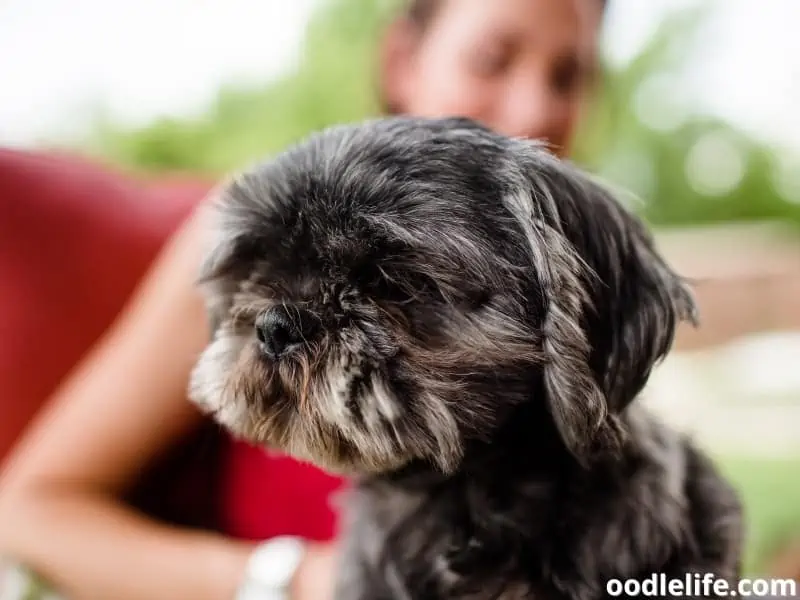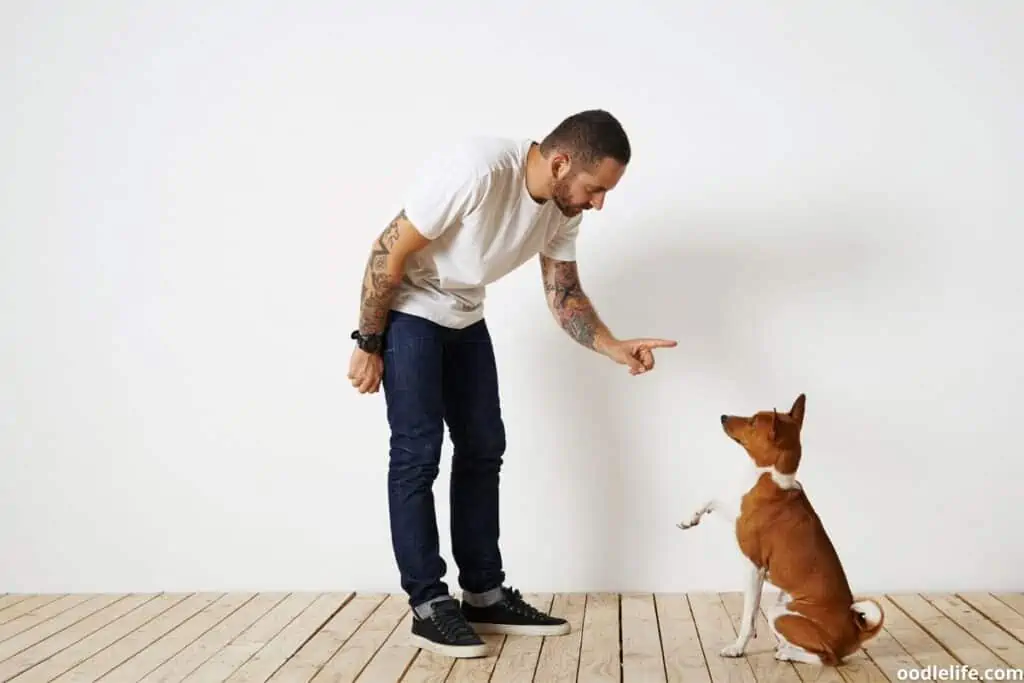How To Assert Dominance Over a Dog? (Ethically)
Dogs are naturally curious creatures, which is part of the reason people love them so much. But in some cases, that curiosity can turn into disobedience. And a disobedient dog isn’t just annoying.
It’s also dangerous.

That’s why you must train your dog to be as obedient as possible. One primary way you can teach your dog to obey you is by asserting dominance over it. Let’s teach you how to assert dominance over a dog so that you and your pup can have a healthy, happy relationship!
How To Assert Dominance Over a Dog for Permanent Results?
Asserting your dominance isn’t a one-and-done thing. You have to put in effort every time you interact with your dog. That way, it knows you’re the dominant party in the relationship.
So, let’s look at five ways to assert dominance over your dog.
Become the Alpha
Dogs descended from wolves, and because of that, they have a lot of attributes ingrained in their psychology. One of those elements is their pack mentality. Packs of wolves have an alpha, who’s often the strongest wolf in the group.

If you want to assert dominance over your dog, you must take on an alpha mentality. Whether you’re playing inside your home or out on a walk, you must be the one in control.
Dogs rely on observing body language to understand your emotions. If your dog is behaving poorly, you must be mindful of your body language. Don’t appear large and threatening. Instead, try to appear calm and in control.
If your body language indicates you’re unsettled by the situation, your dog could take advantage by acting badly. You must always remain calm and use assertive body language and vocal cues to control your dog.
Reward Good Behavior and Punish Bad Behavior
Rewarding good behavior and punishing bad behavior is perhaps the most important element of asserting dominance over your dog. By rewarding your dog, you can create a system where your dog wants to please you, which results in better behavior.

When you reward a dog, it should be for the behavior you want to see. So, if you tell your dog to sit, eat, or do any other task, reward it. Your dog should get a reward if it completes the assignment immediately.
Rewards can come in many forms, including treats, affection, or toys.
Punishing bad behaviors is a bit more complicated. Dogs don’t have good memories. They can’t connect past actions to present punishments.
That means if you come home from work to find something missing on the counter or your slippers with holes in them, it doesn’t make sense to punish them.
So, the best time to punish your pet is when you witness them doing something wrong. That way, your dog will understand that the punishment is because of what it just did. Some acceptable forms of punishment include:
- Use a single loud noise to disrupt negative behavior.
- Have a word, such as “no,” that you use to correct bad behavior.
- Use a gentle touch, such as a tap behind the ear, to redirect their attention.
- Use a cage, especially if you need to clean up a mess.
Have Clear and Consistent Rules
Having clear and consistent rules allows you to reward and punish your dog. If your rules are inconsistent, your dog will quickly become confused. These rules should be simple to communicate with single words, such as “no,” “off,” “good,” or “okay.”

Some examples of rules for your dog include:
- No chewing on human possessions.
- No sitting on the furniture.
- No table food.
- No sitting in front of open entrance doors.
- No jumping on people.
Effective communication with simple phrases is good because your dog will associate those words with the rules. Clear communication makes it a lot easier to enforce the rules, and in turn, for you to assert dominance over your dog.
Control the Resources
Controlling the resources is key to retaining a dominant status with your dog. The primary resource your dog receives from you is food. But controlling your dog’s food doesn’t mean you limit its intake.

Instead, it means you dictate the time your dog receives its food.
Choose the time of day you feed your dog. In all likelihood, you’ll feed your dog before you go to work and after you arrive home. When you feed your dog, train them to begin eating their food only when you say so.
To start, get your dog to sit away from its eating area. Then, while your dog remains seated, fill up its food bowl. If your dog gets up to eat, make them go sit in its original spot.
After you fill the bowl, make the dog wait for a few seconds. After you’ve made it wait, practice using a release word, which should indicate to your dog that it can eat. Some examples of release words could be “now” or “okay.”
After repeating this food distribution method every day, your dog will come to understand that you control when it gets its food. By controlling its food, you will have a significant form of dominance over your dog and you can avoid any food aggression.
Basic Obedience Training
Training your dog is the single most important way you can assert dominance over your dog. Training is an exercise of patience and persistence. You need to be firm and you need to train your dog constantly.

Starting from the puppy stage, train your dog to follow basic commands such as “sit” and “wait.” Build up your training with more complicated commands once your dog masters the basic ones.
By training your dog, your dog will begin to see you as its leader. You can reinforce this idea by giving it positive reinforcement when it completes a task. That way, not only will it see you as the leader, but also as the person who gives it rewards when it listens.
Are You Ready to Show Your Dog Dominance?
So, if you’ve been wondering how to assert dominance over a dog, you now have some resources to help you complete that task. After just a few weeks of exhibiting dominant behavior, your dog will see you as their leader!